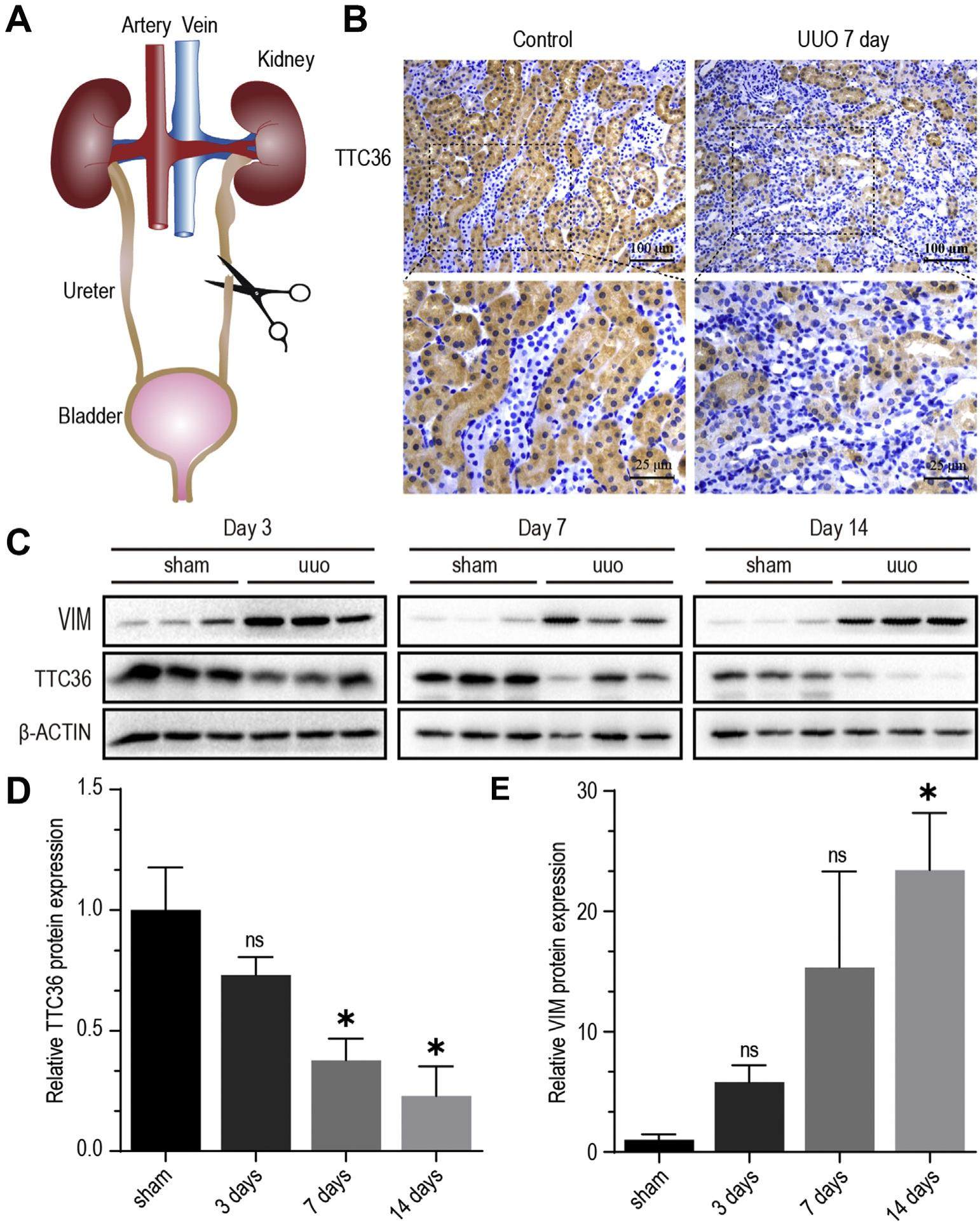
Tetratricopeptide repeat domain 36 deficiency mitigates renal tubular injury by inhibiting TGF-β1-induced epithelial-mesenchymal transition in a mouse model of chronic kidney disease


The damage of proximal tubular epithelial cells (PTECs) is considered a central event in the pathogenesis of chronic kidney disease (CKD) and deregulated repair processes of PTECs result in epithelial-mesenchymal transition (EMT), which in turn aggravates tubular injury and kidney fibrosis. In this study, we firstly revealed that the reduction of TTC36 is associated with unilateral ureteral obstruction (UUO)-induced CKD; besides, ablation of TTC36 attenuated tubular injury and subsequent EMT in UUO-treated mice kidneys. Consistently, TTC36 overexpression promoted EMT in TGF-β1-induced HK2 cells. Moreover, TTC36 elevated the protein expression of CEBPB, which was involved in the regulation of TGF-β/SMAD3 signaling, and augmented SMAD3 signaling and downstream genetic response were reduced by CEBPB silencing. Collectively, our results uncovered that TTC36 deficiency plays a protective role in tubular injury and renal fibrosis triggered by UUO; further, TTC36 overexpression exacerbated TGF-β/SMAD3 signaling via elevating the stability of SMAD3 and CEBPB, suggesting that TTC36 inhibition may be a potential strategy in the therapy of obstructive nephropathy.
